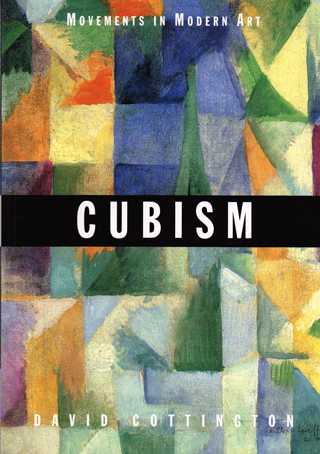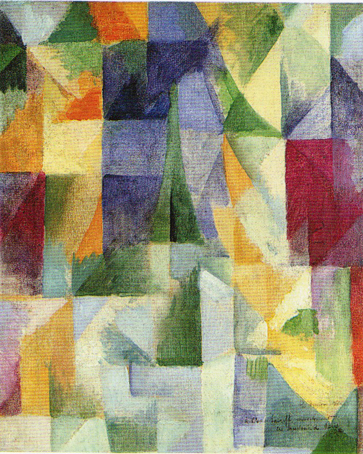November 2011
On the Inadequacy of Scientific Knowledge
Having picked up an interest in Zen from reading Hofstadter's Gödel, Escher, Bach, I started reading Zen and the Art of Motorcycle Maintenance by Robert Pirsig. Whether or not I learn anything about Zen or motorcycles remains to be seen.1 However, not quite a third of the way through the book Pirsig presents an argument for the inadequacy of scientific knowledge as a source of truth. He begins by observing that "the number of rational hypothesis that can explain any given phenomenon is infinite."2 He continues:
If true, that rule is not a minor flaw in scientific reasoning. The law is completely nihilistic. It is a catastrophic logical disproof of the general validity of all scientific method!
If the purpose of scientific method is to select from a multitude of hypothesis, and if the number of hypothesis grows faster than the experimental method can handle, then it is clear that all hypothesis can never be tested. If all hypothesis cannot be tested, then the results of any experiment are inconclusive and the entire scientific method falls short of its goal of establishing proven knowledge.
About this Einstein had said, "Evolution has shown that at any given moment out of all conceivable constructions a single one has proved absolutely superior to all the rest," and let it go at that. But to Phaedrus3 that was an incredibly weak answer. The phrase "at any given moment" really shook him. Did Einstein really mean to state that truth was a function of time? To state that would annihilate the most basic presumption of all science!
But there it was, the whole of history of science, a clear story of continuously new and changing explanations of old facts. The time spans of permanence seemed completely random, he could see no order to them. Some scientific truths seemed to last for centuries, others for less than a year. Scientific truth was not a dogma, good for eternity, but a temporal quantitative entity that could be studied like anything else.
He studied scientific truths, then became upset even more by the apparent cause of their temporal condition. It looked as though the time spans of scientific truths are an inverse function of the intensity of scientific effort. Thus the scientific truths of the twentieth century seem to have a much shorter life-span than those of the last century because scientific activity is now much greater. If, in the next century, scientific activity increases tenfold, then the life expectancy of any scientific truth can be expected to drop to perhaps one-tenth as long as now. What shortens the lifespan of the existing truth is the volume of hypothesis offered to replace it; the more the hypothesis, the shorter the time span of the truth. And what seems to be causing the number of hypothesis to grow in recent decades seems to be nothing other than scientific method itself. The more you look, the more you see. Instead of selecting one truth from a multitude, you are increasing the multitude. What this means logically is that as you try to move toward unchanging truth through the application of scientific method, you actually do not move toward it at all. You move away from it. It is your application of scientific method that that is causing it to change!
What Phaedrus observed on a personal level was the phenomenon, profoundly characteristic of the history of science, which has been swept under the carpet for years. The predicted results of scientific enquiry and the actual results of scientific enquiry are diametrically opposed here, and no one seems to pay much attention to the fact. The purpose of scientific method is to select a single truth from among many hypothetical truths. That, more than anything else, is what science is all about. But historically science has done exactly the opposite. Through multiplication upon multiplication of facts, information, theories, and hypotheses, it is science itself that is leading mankind from single absolute truths to multiple, indeterminate, relative ones. The major producer of the social chaos, the indeterminacy of thought and values that rational knowledge is supposed to eliminate, is none other than science itself. And what Phaedrus saw in the isolation of his own laboratory work is now seen everywhere in the technological world today. Scientifically produced antiscience -- chaos.
There is a lot to consider and commend in this argument. Certainly, anyone who has uttered, "the more I know the less I know" understands that as knowledge increases the unknown also appears to increase. Every advance in knowledge pushes out the unexplored frontier. It is unclear how much there is to be known. Even if an argument to the boundedness of knowledge about the physical universe could be made based upon the number of particles therein, I suspect we will find limits to how far we can explore. We likely cannot know all that could be known. And this omits the field of mathematical knowledge, where Gödel showed the incompleteness of formal systems.
The idea that scientific knowledge is a function of time needs to be stressed. Now I happen to think4 that the recent Opera claim of superluminal neutrinos won't stand upon further investigation, but if it does it will require adjustments to relativity.
Finally, if it is true that science produces antiscience then the resulting chaos can't be repaired by more application of the scientific method, unless scientific knowledge is finite.
While I think that much of this argument has merit, I put it in the Bad Arguments category, not because I necessarily disagree with the conclusions, but because the premise that "the purpose of the scientific method is to select a single truth from many hypothetical truths" is wrong. The scientific method is not "when I repeatedly do this I get that result therefore this result can always be expected". That's observation and induction, no different from "the sun rose yesterday, the sun rose today, therefore the sun will rise tomorrow." We know there will come a time when the sun won't rise the next day. Induction is not a sure means to truth, even though we often have to rely on it.5 As Einstein said, "No amount of experimentation can ever prove me right; a single experiment can prove me wrong."6
The power of the scientific method comes from the logical equation: (A → B) ∧ ¬B → ¬A. In English, "if A implies B, and B is not true, then A is not true." Experiments don't establish theories, they show if a theory is wrong. The scientific method doesn't establish truth, it establishes falsehood. Consider a piece of paper as an analogy to knowledge. Let the color gray represent what we don't know. Let white represent truth. Let black stand for falsehood. The paper starts out gray. We don't know if the paper is finite or infinite in extent. Science can turn gray areas black, to represent the things we know are not true. But it can't turn gray areas white.
And yet, the earth revolves around the sun and E=mc2. Even if superluminal neutrinos really do exist, atomic weapons still work by turning a little bit of matter into a lot of energy. How we go from gray to white is another topic for another day. But with the correction of Pirsig's premise, much of his argument still follows.
[1] In the Author's Note, Pirsig writes "[this book] should in no way be associated with that great body of factual information relating to orthodox Zen Buddhist practice. It's not very factual on motorcycles either."
[2] Pg. 559. I don't know why I bother with page numbers, as they vary from e-reader to e-reader.
[3] Phaedrus is the author in an earlier stage of his life.
[4] I'm no expert. Don't wager based on my opinion.
[5] See On Induction by Russell.
[6] This appears to be a paraphrase. See here.
If true, that rule is not a minor flaw in scientific reasoning. The law is completely nihilistic. It is a catastrophic logical disproof of the general validity of all scientific method!
If the purpose of scientific method is to select from a multitude of hypothesis, and if the number of hypothesis grows faster than the experimental method can handle, then it is clear that all hypothesis can never be tested. If all hypothesis cannot be tested, then the results of any experiment are inconclusive and the entire scientific method falls short of its goal of establishing proven knowledge.
About this Einstein had said, "Evolution has shown that at any given moment out of all conceivable constructions a single one has proved absolutely superior to all the rest," and let it go at that. But to Phaedrus3 that was an incredibly weak answer. The phrase "at any given moment" really shook him. Did Einstein really mean to state that truth was a function of time? To state that would annihilate the most basic presumption of all science!
But there it was, the whole of history of science, a clear story of continuously new and changing explanations of old facts. The time spans of permanence seemed completely random, he could see no order to them. Some scientific truths seemed to last for centuries, others for less than a year. Scientific truth was not a dogma, good for eternity, but a temporal quantitative entity that could be studied like anything else.
He studied scientific truths, then became upset even more by the apparent cause of their temporal condition. It looked as though the time spans of scientific truths are an inverse function of the intensity of scientific effort. Thus the scientific truths of the twentieth century seem to have a much shorter life-span than those of the last century because scientific activity is now much greater. If, in the next century, scientific activity increases tenfold, then the life expectancy of any scientific truth can be expected to drop to perhaps one-tenth as long as now. What shortens the lifespan of the existing truth is the volume of hypothesis offered to replace it; the more the hypothesis, the shorter the time span of the truth. And what seems to be causing the number of hypothesis to grow in recent decades seems to be nothing other than scientific method itself. The more you look, the more you see. Instead of selecting one truth from a multitude, you are increasing the multitude. What this means logically is that as you try to move toward unchanging truth through the application of scientific method, you actually do not move toward it at all. You move away from it. It is your application of scientific method that that is causing it to change!
What Phaedrus observed on a personal level was the phenomenon, profoundly characteristic of the history of science, which has been swept under the carpet for years. The predicted results of scientific enquiry and the actual results of scientific enquiry are diametrically opposed here, and no one seems to pay much attention to the fact. The purpose of scientific method is to select a single truth from among many hypothetical truths. That, more than anything else, is what science is all about. But historically science has done exactly the opposite. Through multiplication upon multiplication of facts, information, theories, and hypotheses, it is science itself that is leading mankind from single absolute truths to multiple, indeterminate, relative ones. The major producer of the social chaos, the indeterminacy of thought and values that rational knowledge is supposed to eliminate, is none other than science itself. And what Phaedrus saw in the isolation of his own laboratory work is now seen everywhere in the technological world today. Scientifically produced antiscience -- chaos.
There is a lot to consider and commend in this argument. Certainly, anyone who has uttered, "the more I know the less I know" understands that as knowledge increases the unknown also appears to increase. Every advance in knowledge pushes out the unexplored frontier. It is unclear how much there is to be known. Even if an argument to the boundedness of knowledge about the physical universe could be made based upon the number of particles therein, I suspect we will find limits to how far we can explore. We likely cannot know all that could be known. And this omits the field of mathematical knowledge, where Gödel showed the incompleteness of formal systems.
The idea that scientific knowledge is a function of time needs to be stressed. Now I happen to think4 that the recent Opera claim of superluminal neutrinos won't stand upon further investigation, but if it does it will require adjustments to relativity.
Finally, if it is true that science produces antiscience then the resulting chaos can't be repaired by more application of the scientific method, unless scientific knowledge is finite.
While I think that much of this argument has merit, I put it in the Bad Arguments category, not because I necessarily disagree with the conclusions, but because the premise that "the purpose of the scientific method is to select a single truth from many hypothetical truths" is wrong. The scientific method is not "when I repeatedly do this I get that result therefore this result can always be expected". That's observation and induction, no different from "the sun rose yesterday, the sun rose today, therefore the sun will rise tomorrow." We know there will come a time when the sun won't rise the next day. Induction is not a sure means to truth, even though we often have to rely on it.5 As Einstein said, "No amount of experimentation can ever prove me right; a single experiment can prove me wrong."6
The power of the scientific method comes from the logical equation: (A → B) ∧ ¬B → ¬A. In English, "if A implies B, and B is not true, then A is not true." Experiments don't establish theories, they show if a theory is wrong. The scientific method doesn't establish truth, it establishes falsehood. Consider a piece of paper as an analogy to knowledge. Let the color gray represent what we don't know. Let white represent truth. Let black stand for falsehood. The paper starts out gray. We don't know if the paper is finite or infinite in extent. Science can turn gray areas black, to represent the things we know are not true. But it can't turn gray areas white.
And yet, the earth revolves around the sun and E=mc2. Even if superluminal neutrinos really do exist, atomic weapons still work by turning a little bit of matter into a lot of energy. How we go from gray to white is another topic for another day. But with the correction of Pirsig's premise, much of his argument still follows.
[1] In the Author's Note, Pirsig writes "[this book] should in no way be associated with that great body of factual information relating to orthodox Zen Buddhist practice. It's not very factual on motorcycles either."
[2] Pg. 559. I don't know why I bother with page numbers, as they vary from e-reader to e-reader.
[3] Phaedrus is the author in an earlier stage of his life.
[4] I'm no expert. Don't wager based on my opinion.
[5] See On Induction by Russell.
[6] This appears to be a paraphrase. See here.
Comments
Proud Father, VII
11/20/11 11:27 AM Filed in: Life | Proud Father

She Also Said Yes!
11/15/11 02:50 PM Filed in: Life | Proud Father

Cubism


Dispensing with the screen of neo-Impressionist brushstrokes - perhaps recognizing its superfluity, given the constructive potential of the device of a colour grid - Delaunay orchestrates a range of spectral colors around the spatial recession from the foreground orange curtains to the background blue sky and the green profile of the tower. As in the hermetic paintings of Picasso and Braque, the representational legibility of the image is secured by the vestigial iconic character of these motifs. But unlike their exploration and celebration of the linguistic magic of painting for its own sake - or perhaps for its suggestion of a reality beyond appearance - Delaunay's bracketing of his complex and fragmented representation of the cityscape between the external limit of the picture frame/window and the internal limit of the distant tower posits an equivalence between the experience of deciphering the painting and the active, constructive nature of visual perception that life in a modern city entails. [pg 61].
"Vestigial iconic character?" The pointed green triangle-like object is the Eiffel Tower? The blue is the sky? The yellow-orange represents curtains? There's a cityscape in there somewhere? Obviously I am a barbarian, unlearned in the vocabulary of Cubism. Nevertheless, some Cubist art is strikingly beautiful. Even if I don't necessarily know what it means.

